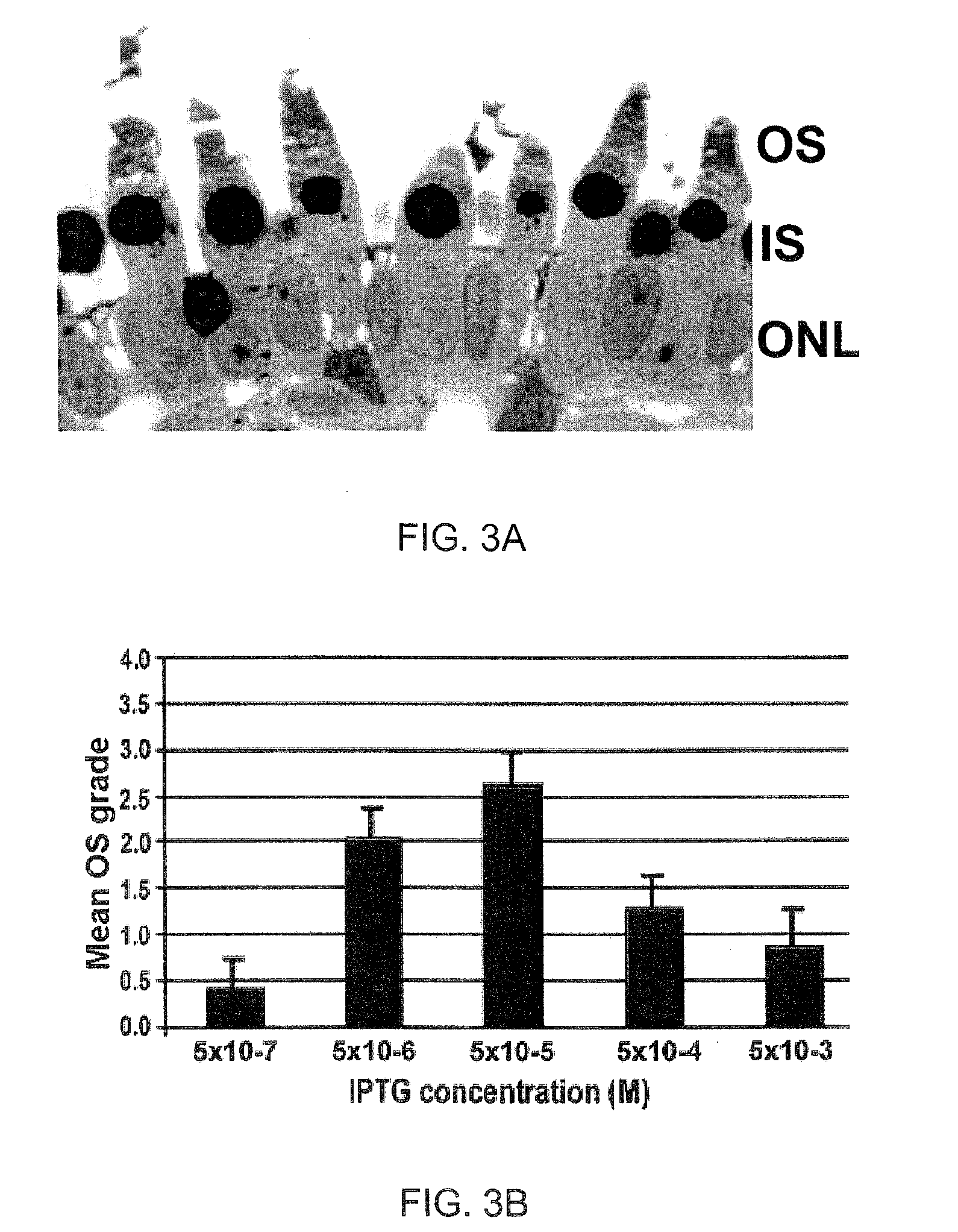Glycan binding proteins as therapeutic targets for retinal disorders and treatment methods based thereon
a retinal disorder and glycan-binding protein technology, applied in the field of glycan-binding proteins, can solve the problems of incomplete characterization of the chain of events ununderstandable nature of molecular signals that regulate the assembly of os, and inability to fully understand os both. to achieve the effect of high affinity of the retinal glycan-binding protein
- Summary
- Abstract
- Description
- Claims
- Application Information
AI Technical Summary
Benefits of technology
Problems solved by technology
Method used
Image
Examples
example 1
In Vitro Assay System for Testing Ability of Compounds to Support Assembly of Photoreceptor Outer Segment (OS) Membranes
[0110]This Example describes an exemplary assay system useful for testing the effect of candidate compounds on OS assembly in vitro.
[0111]We have used various oligosaccharides at concentrations ranging over four orders of magnitude to evaluate the ability of these oligosaccharides to support OS membrane assembly in RPE-deprived retina, using a Xenopus laevis system that allows for convenient analysis of OS membrane formation in vitro. In the RPE-deprived cultures, the RPE continues to be present as a cluster of cells at the ora serrata; however throughout the posterior pole and periphery of the retina, the RPE layer has been removed from its normal position adjacent to the photoreceptors.
[0112]Previous studies have shown that only lactose, galactose, and substituted forms of these permissive sugars permit OS to organize in the absence of the RPE. Other sugars, such...
example 2
Support of OS Assembly is Mediated by Non-Metabolizable Sugars
[0115]This Example demonstrates that the ability of certain “permissive” sugars to support photoreceptor OS assembly can occur via a saturable, non-metabolic mechanism, consistent with the interaction of the sugar with a cell surface receptor.
[0116]The results presented in Example 1 above show that lactose and galactose, which are examples of “permissive” glycans, are able to support photoreceptor OS membrane assembly to a level that is significantly greater than in its absence. Because lactose and galactose are sugars, however, it is possible that they may exert their OS organizational effect through a metabolizable property, e.g., by merely providing an energy source to the cells (such as by feeding into the Krebs' cycle), or by permitting glycosylation of some essential proteins, or both.
[0117]To separate out the metabolizable properties of permissive sugars from properties unrelated to sugar metabolism, intact RPE-dep...
example 3
Support of OS Assembly by Permissive Sugars is Reversible
[0119]This Example describes results of experiments demonstrating that the support of OS assembly by permissive sugars occurs by a mechanism that is reversible.
[0120]RPE-deprived retinas were exposed to permissive sugars at optimal concentrations (i.e., 5×10−3 M lactose and 5×10−5 M IPTG), supplemented with 3H-leucine for a period of two days, followed by an additional two days in non-supplemented medium. FIG. 4A illustrates an example of an RPE-deprived retina that was exposed to IPTG using the above-described culture paradigm. The photograph shown in FIG. 4A is a composite of a brightfield image overlaid with a darkfield image that was pseudo-colored (in this case, red). In the majority of the photoreceptors, the OS membranes that are most displaced from the inner segment portion of the photoreceptor, and therefore were assembled during the early part of the culture paradigm during the period of exposure to IPTG and 3H-leuci...
PUM
| Property | Measurement | Unit |
|---|---|---|
| pH | aaaaa | aaaaa |
| volume | aaaaa | aaaaa |
| pressure | aaaaa | aaaaa |
Abstract
Description
Claims
Application Information
 Login to View More
Login to View More - R&D
- Intellectual Property
- Life Sciences
- Materials
- Tech Scout
- Unparalleled Data Quality
- Higher Quality Content
- 60% Fewer Hallucinations
Browse by: Latest US Patents, China's latest patents, Technical Efficacy Thesaurus, Application Domain, Technology Topic, Popular Technical Reports.
© 2025 PatSnap. All rights reserved.Legal|Privacy policy|Modern Slavery Act Transparency Statement|Sitemap|About US| Contact US: help@patsnap.com



